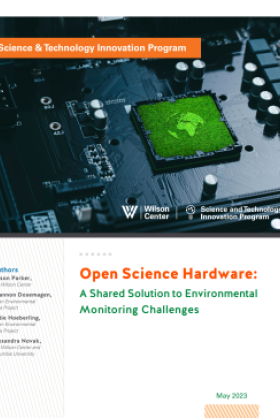Open Science Hardware: A Shared Solution to Environmental Monitoring Challenges


Recent legislative actions, such as the American Rescue Plan and Inflation Reduction Act, have directed resources to community monitoring efforts using low-cost sensors and other, often proprietary, tools. The proprietary tools used in community monitoring efforts are typically expensive to procure and maintain, and they lack modularity and transparency, which limits their impact.
The Biden Administration’s Office of Science and Technology Policy (OSTP) declared 2023 the Year of Open Science, signaling a shift in focus from proprietary tools to building shared infrastructure for science. In contrast to proprietary tools, open science hardware is an approach to the creation and use of scientific tools, such as sensors for monitoring air and water quality, that according to the Open Source Hardware Association enables anyone to “make, modify, distribute, and use” their design. These tools are often low cost and have a higher return on investment than proprietary tools. They can also increase scientific reproducibility and catalyze collaboration. Beyond accessibility, open science hardware builds transparency along the entire toolchain, alongside open source software, open data, and open research products. The transparency of open science hardware supports data use and sharing between institutions and communities, bridging trust between these different groups.
Open science hardware has been impactful in building infrastructure for academic and community monitoring efforts; however, it has received less attention in formalized monitoring practices. To understand the role of open science hardware for environmental monitoring at all levels of the US government, the Wilson Center and the Open Environmental Data Project convened a roundtable in 2022 with experts in the field.
Driven by the 2022 roundtable outputs, this policy brief outlines the potential of open science hardware to benefit environmental monitoring efforts in tribal, local, state, and federal governments. It then explores strategies to address current barriers and accelerators to impact. The policy brief also outlines a roadmap, with short-term and long-term goals, needed for open science hardware to be fully integrated into environmental monitoring at all levels of government in the US.
Authors





Science and Technology Innovation Program
The Science and Technology Innovation Program (STIP) serves as the bridge between technologists, policymakers, industry, and global stakeholders. Read more

Explore More
Browse Insights & Analysis
Empowering Participation in Science: A Citizen Science Landscape

How to Secure Open Source Software: The Dilemma of the XZ Utils Backdoor

